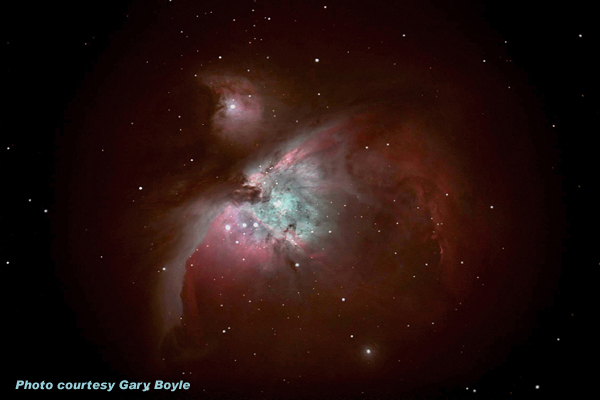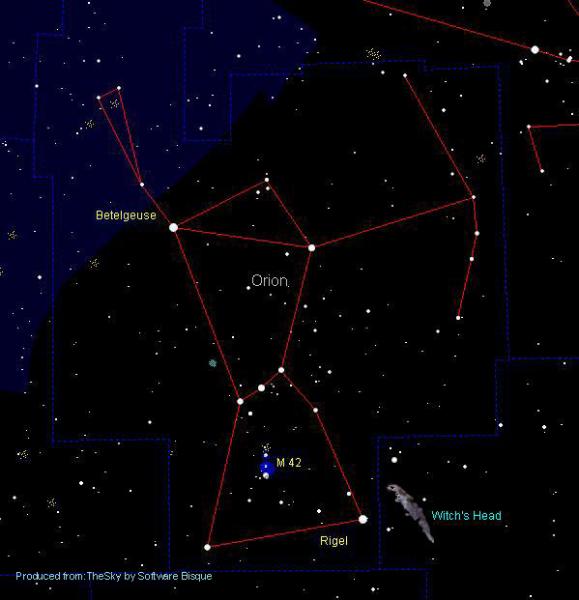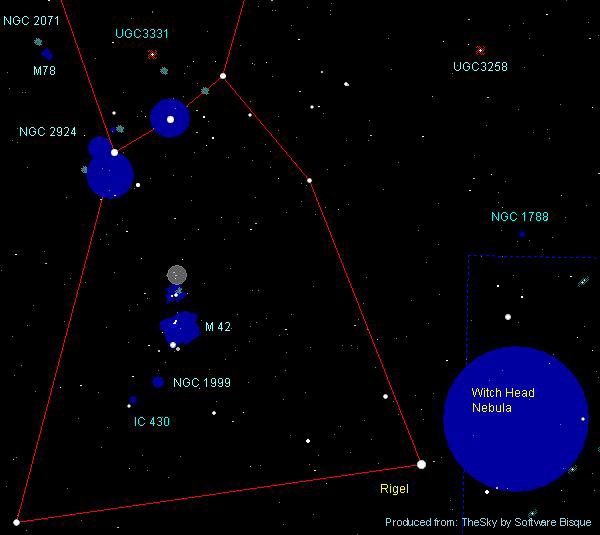Star Renewal
It is sometimes hard to convey the feeling of standing under a moonless winter sky. Distant suns of Orion, Taurus, Auriga, Gemini as well as Canis Minor and Major are bright, crisp and overall – mesmerizing. Other than following the nightly dance of the Moon as it orbits Earth or tracking the planets as they slide across the familiar constellations along the ecliptic, one might think that is all that changes in the galaxy. But our Milky Way Galaxy, with its population of an estimated two hundred billion stars, is changing. It is the time scale that is the key factor.
The points of light we see at night are stars that have been burning for millions or even billions of years. Our Sun, for instance, has been ablaze for the past 4.5 billion years and is thought to be only halfway on its expected life span. You can almost say that stars are comparable to live on Earth as they are born; they live very long lives and eventually die when they have consumed their internal fuel. So how are stars created?
Throughout our galaxy, as well as other remote galaxies, reddish or pinkish patches of molecular gas and dust called emission nebulae can be observed. These nebulas can measure in the tens of light-years across and are essential – stellar nurseries. Within the time frame of millions of years, various regions of the nebula will collapse upon itself. Acting like a gigantic snowball, the small pockets in the nebula condenses the dust and gas to eventually form a gravitational field. With gravitational forces increasing, the rate of stellar growth continues until the star is so large that internal temperatures reached the point where the thermonuclear reaction occurs and the star ignites. It is these young hot stars that cause this emission nebula to glow from within.
A perfect example of stellar evolution is the Orion Nebula which forms the sword hanging down the mythological Hunter’s belt. At a mere 1,500 light-years from us, M42 can be studied and photographed in great detail. Even the Hubble Space Telescope could not resist a peek. This 4th magnitude object can even be glimpsed from moderate light-polluted suburbs. Its 42 light-year width shows up nicely in a low power eyepiece. Located at the centre of the nebula is the Trapezium. These four bright newly formed stars light up the rest of the nebula as I have earlier explained. Now try looking for a curved arm on the east and west side of the Orion nebula. Termed the “bat’s wings”, its delicate structure will require greater aperture. But no matter what scope you are using to show your family or neighbour, you can say – with confidence that dozens of future suns are growing in there right now at its core.

The Flame Nebula is another emission nebula that is being illuminated from within. Photos will reveal its reddish nature to add to its namesake. The young stars that are responsible for the Flame’s internal light, seems to be perfectly hidden behind a portion of dense gas, much like fireflies behind a tree trunk. NGC 2024 is about the same distance as the Orion Nebula and is part of Orion’s gigantic molecular cloud – a structure that takes in a huge chunk of Orion’s territory. To the upper right of the photo are reflection nebulae.

A little more than a degree south and a little to the east is the reflection nebula NGC 1999. Reflection nebulas tend to show up as blue which is a contrast from the reddish emission variety. NGC 1999 is being lit by a nearby star much like log lights up with a flashlight at night. The ghostly portion of this cloud is the clump of the dense cloud that does not permit light to enter. In the classic image courtesy of the Hubble Space Telescope, the dark portion looks like an old skeleton key door lock.
For a ghoulish reflection – look about two-degree west of brilliant Rigel. The Witch’s Head nebula is a long six degree slender stretch of gas. Catalogued as IC 2118, the cloud that might be an ancient supernova remnant and takes on the uncanny resemblance of a Witch – pointy nose and long chin. Rigel (Orion’s right foot) is a supergiant star that shines 40,000 times that of our Sun and is so bright, it lights up the nebula some 40 light-years away. However, Rigel seems to be on its last legs so to speak. It appears Rigel is fusing helium into carbon and oxygen.
Another bright star that is losing its strength is Betelgeuse. Orange-yellow in colour, it marks Orion’s left shoulder. If we replaced our Sun with Betelgeuse, it would stretch as wide as the Asteroid Belt located between Mars and Jupiter. Betelgeuse is only a few million years old, but because of its size and brightness, has used up a lot of fuel in a short amount of time. Astronomers believe that alpha Orionis will soon go supernova. The question is when. At 640 light-years away, we should be at a safe distance.

Throughout the month, keep following the red planet Mars as it moves westward (retrograde) with the stars. On January 29th it will be at opposition and therefore closest to the Earth since its last opposition at the end of December 2007.
During opposition, it will rise when the sun sets. On the 29th Mars will be over 99 million kilometres from Earth, a far cry from the closest-ever approach on Aug 27, 2003, when it was about 56 million kilometres. But still, great views of Martian landmarks should reveal themselves in telescopes. Try your hand at photographing our planetary neighbour before our distance increases after January 29th. The first week of February will see Mars come within 3.5 degrees north of M44 - the Beehive cluster. The next closest approach occurs on March 3, 2012.
Saturn is now in the constellation Virgo and rises around midnight local time at the beginning of January. Its rings will be tilted to 4.9 degrees. Alas as we greet Saturn in the east, we say farewell to Jupiter in the southwest as it set mid-evening. The Full Wolf Moon will occur on January 30th. It will be the largest moon of the year and Mars will appear seven degrees north of it.
